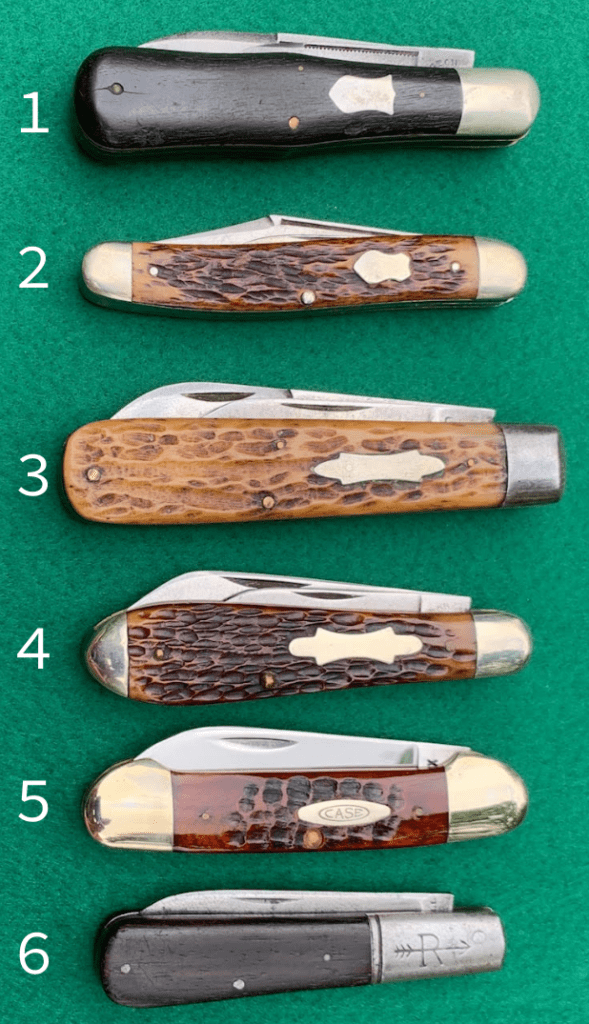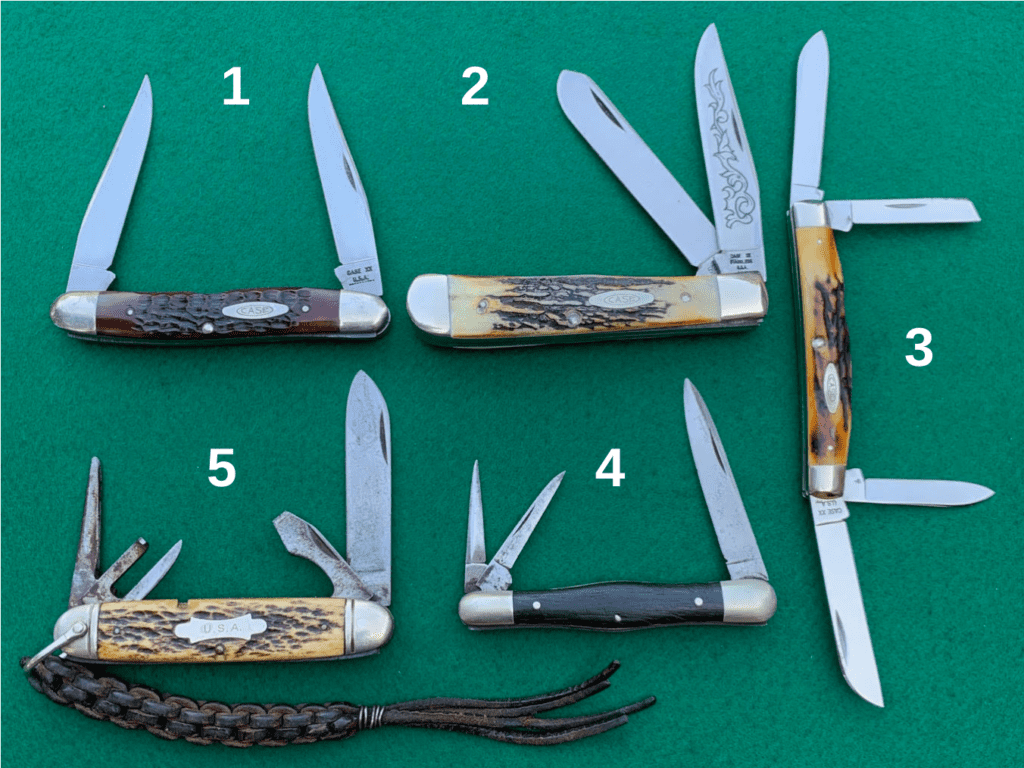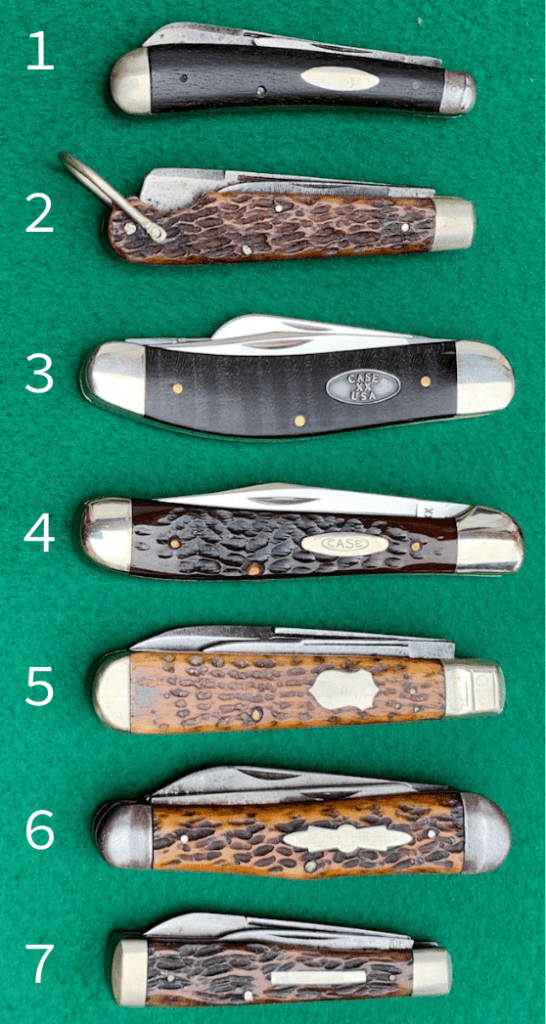Guide to Collecting Pocket Knives, part II
Thanks for checking out my guide to collecting old pocket knives. I hope you find this information useful and enjoy the content. The following contains affiliate links.
Knife Patterns
There are many pocket knife patterns. The name of the pattern is sometimes determined by the shape of the handle while other times it is the blade configuration. Below are some common knife patterns featuring jigged bone and wood handles:

- Coke Bottle – looks like an old coke bottle with a swell center and a base that is larger than the top (Southington Cut Co).
- Serpentine – handles of this knife are curved and have a snake like appearance (Remington).
- Barehead – one side has a bolster while the other does not (Cattaraugus Cut Co).
- Swell End – sometimes called a tear drop, often times accompanied with an easy open notch (Robeson Cut Co).
- Canoe – the bumps on either side of the handle give this pattern a canoe like appearance (Case XX).
- Barlow – like a bare head jack but the bolster is elongated (Russell).
Here are some additional pocket knife patterns:
- Sway Back – curved handle with the pivot end narrower (New York Knife Co).
- Easy Open Barehead – barehead handle with a notch for grabbing and opening the blade (Camillus Cut Co).
- Sowbelly – downward curve to this knife, resembling an old horse that has been ridden too much (Case XX).
- Copperhead – mostly made by Case, these knives have a slight curve and a bolster that features a large bump on top (Case XX).
- English Jack – typically has fancy bolsters and the bolster on the wider end is flattened. Usually a larger jack at 4″ or more closed (Southington Cut Co).
- Eureka – the handle has a bump on the bottom, like half a swell center (Henry Sears).
- Gunstock – has a bump on the top handle that resembles the stock of a rifle.
The following knives are mostly named by the blade configuration:

- Muskrat – serpentine handle (curved) with two muskrat blades on each end (Case XX USA 10 dot).
- Trapper – larger knife with two long blades; typically a clip and spey (Case XX – Blue Scroll – 1977).
- Congress – four blade configuration with a “bent” handle shape (Case XX – 1965-69).
- Whittler (balloon or swell center) – One master blade and two smaller pen blades on the opposite end (Maher & Grosh)
- Engineers knife (utility, camp, scout) – equal end handle accompanied with four blades (Camillus Cut Co – WWII).

